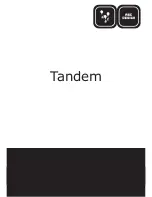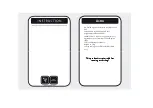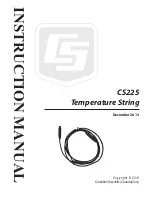
5.
Recommendations and drives selection (motors drives)
Choice of appropriate motors for a machine is very individual. In this chapter, we describe briefly
differences between stepper and servomotors. Designer practice shows there is a dilemma – what
solution should be chosen. Not so long ago – stepper motors were more popular in simpler machines
because of high prices of servo drives. Presently, technological progress and a dissemination of servo
technology causes that building a machine – even as a hobby – it is worth to consider servo drives.
The most common mistake while decision-making is
power selection (and torque) of the servo drive. It hap-
pens because we are suggested by torque and holding
torque. The first parameter is usually given with the ser-
vo drives and the second with the stepper motors. Both
are usually in the same unit Nm (Newton – meter).
Do
not compare these parameters when you are choosing
servo drive power.
Holding torque in the stepper motors
is a power that the shaft of the powered motor in
standby mode is held in position. When the revs are very
low – something about 200 rpm - the torque is almost the same (pictures below), but with increasing
revs the torque, actually the power on the motor shaft), decreases drastically. It decreases to such
low value that sometimes happens that at 1000 rpm. the motor has no power to work itself, not say-
ing about propelling the machine.
In the simple words: the 3Nm stepper motor, reaches 3Nm torque on very low (200 rpm.) revs, when
the revs increase its power decrease to zero. Above, on the left you can see example stepper motor
characteristic.
It is completely different in the servomotors. First, the
torque and the rev speed are nominal. Therefore, the
1Nm/ 2000 rpm motor can operate continuously with
revs: 2000 rpm. and at this speed provides 1Nm of the
torque on the shaft. Besides the servomotors have an-
other one important feature: they can be temporarily
overloaded. What does it mean? That the 1Nm motor
can temporarily deliver even 2,5-4Nm (it depends on the
type).
If we use the motion controller with fast STEP outputs like CSMIO/IP-S, the important parame-
ter of the motor drive is maximum frequency of the steps. Controllers with higher frequency
limit of STEP signal allow you to use higher stepper division (for the stepper motors) or encoders with
larger pulses number per rev (servo).
However, everything has its pros and cons. So what are the disadvantages of servo drives? They
are certainly more expensive - how much, it depends what kind of stepper and servo drives you
C S - L a b s . c . – C S M I O / I P - S - C N C C o n t r o l l e r
Page 35
















































